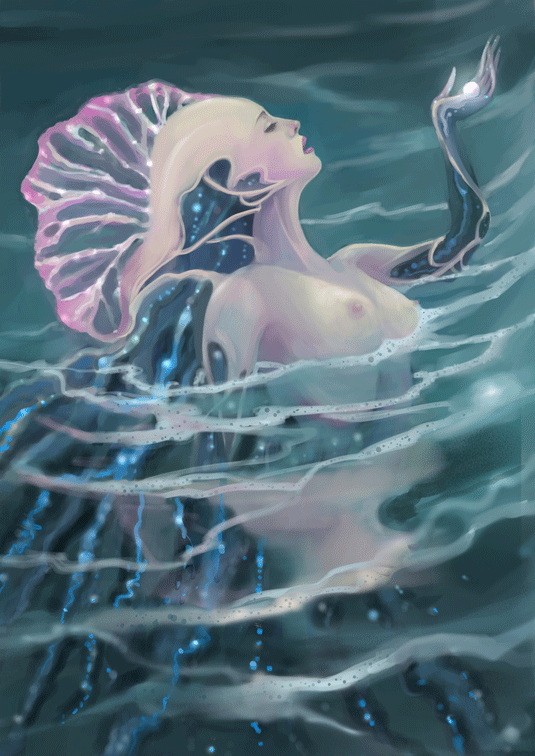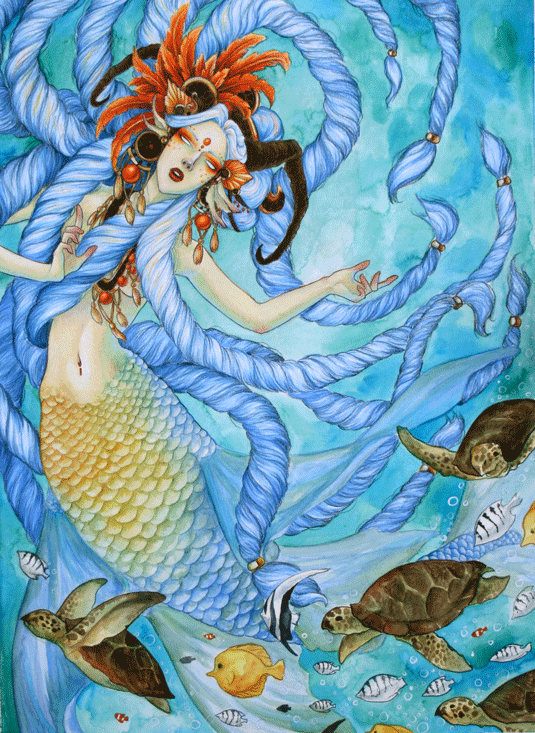When is it okay to work for free?
Exploitation vs exposure: how can you tell when working for free will actually benefit you?

When working as a freelance illustrator or designer, there is always opportunity for "exposure", but this more often than not, means working for free.
It can be a fine line between whether or not this free work is worthy of your precious time, or whether you are being exploited as an artist. But how can you tell when working for free will actually benefit you?
The short answer is: never work for free. But, of course, this isn't realistic, and sometimes free opportunities can lead to very lucrative paid ones. We spoke to artists to find out their own views.
High prestige work

Some artists agree that if you can guarantee exposure, it's worth the time spent. Magazine, High Fructose doesn't pay for it's cover illustrations, but is held in high regard by artists and doesn't require a new image – they will ask for existing imagery.
"I'd be ok with having my piece as a cover of Hi-Fructose magazine even though they don't pay cover artists," says illustrator, Anna Szalas. "They have a big audience and are established so being featured is a big deal."
There are some publishers I will give a discount for, but the reason has to be incredibly important to me
“I don't understand why Hi-fructose cannot pay artists when they are selling their magazine on the art that is in it,” queries Kiri Leonard – who makes a great point.
Perhaps it's a personal choice, do you need the exposure in order to land better jobs? If the answer is yes, perhaps a free image on a cover wouldn't hurt.
Daily design news, reviews, how-tos and more, as picked by the editors.
Jessica Douglas doesn't tend to work for free, but she does make exceptions. "There are some publishers I will give a discount for, but the reason has to be incredibly important to me. I can't tell you what all the reasons would be, but I gave one publisher a discounted rate because it was working with my childhood favorite author."
Keep control

One major factor is whether or not you maintain the rights to your work. "I will occasionally create free art for charity events I'm passionate about," says Amanda Makepeace.
"When it's something I think is important and I have control over what I create I can generate my own positive exposure. Outside of that, I'm very tentative with free art. Some of the fan art challenges look fun, but you have to be careful when it comes to their terms. That's the same with any competition."
"Full freedom/control over what I paint is certainly a big plus that could convince me to do a work for free. But like, true full freedom," agrees Anna Szalas.
Charity gains

It's fairly common for artists to work for free when it comes to charity. "If a charity contacts me asking for use of an image for a fundraiser poster or something, then I'll let them use it," says Alexandra Dawe. But the artist wouldn't create a new image for free.
"I'm waaaaay too slow for that! I used to donate prints for charity auctions but it's just too expensive, I still have to buy the paper, make the print, package and post it. That adds up, it'd be cheaper for me just to donate £10 to the charity!"
I will not do free work and have the added in time of going through tons of edits
Jessica Douglas agrees – it's great to give to charity, but we can't all afford to do so, especially when it's cutting into time you could be getting paid (and artists don't make a lot!)
"IF I'm doing charity work? They are not the art director, I am. I will not do free work and have the added in time of going through tons of edits and so on.
"The charity will give me the list of what they want to have, and I will interpret it from there. They are getting it for free, but I will not promise them the time and attention that top paying clients get."
Katy Grierson adds, "if you have the time and the inclination and it is a cause you are willing to support instead of perhaps giving a monetary donation then go for it."
For the love of money

Sometimes it can be difficult when it comes to those you love. You want to be able to do things for them, and to help them when they need it, but it can be very time consuming and lose you money in the long run.
Alexandra Dawe feels it's a double-edged sword:
"I've had a few friends ask if I'd design a tattoo for them but I always say no. If I charge them they'll be miffed, if I'm doing work for them for free then I'll be resentful. It's healthier for my relationships if I say no."
Louisa Gallie has found that giving "mates rates" can actually pay off. With one client she still gives discount to, and has for ten years.

"I started out doing art for her when I was a newbie artist and she was a newbie author. I charged peanuts and a small royalty fee because 1) she was a good friend and 2) I didn't know any better. And we've kept up that deal (I have raised my rates a little) because friendship.
"However, her career has now advanced to the point where the royalties I get far outstrip any flat fee and I have actually gained a modest following in the self-publishing sphere so it's been one of those cases where I consider it very worthwhile.
"But again, she's a good friend and an excellent, flexible, shining star of a client to work with so I realise this is not the norm."
Jo Blakely has had less favourable experiences when dealing with loved ones. "I have worked for free for family - which was ruinous to some of my relationships. They were difficult, ungrateful, and the worst customers I have ever had - and I wasn't even getting paid. Never again. Never."
No need to ask

The easiest way to gauge whether or not you should be working for free is to ask yourself: did they have to ask? If you'd have offered up your work anyway, it's probably something that's good for you.
"The only instances in which I'll create free artwork is as favours for good people with good causes. I've also always been the initiator to volunteer in these cases instead of the one being asked," admits Angela Schmer.
"I guess control is the biggest factor for me; I know I have the time and the means to volunteer before I do so and I usually have a lot of creative freedom as well. I only do these during slow work months and most turn into personal pieces I can also utilize in my portfolio so I do benefit in that sense."
I guess control is the biggest factor for me; I know I have the time and the means to volunteer before I do so
She maintains a healthy and strong attitude and some of her "voluntary" work has turned into good, steady paid gigs down the line.
"I will absolutely NOT create anything free of charge for large companies who clearly have the means to compensate artists and without it benefiting anyone but themselves. Nor will I give a second thought to anyone who contacts me with an attitude of entitlement!"
Preach sister.
Plus, the "warm fuzzy feelings", she gains from working with charities such as the Afghan Women's Writing project make her feel like she "could take on 100 Reddit trolls" - that's a pretty hearty payment.
Pay doesn't have to mean cash

Cold hard cash is great, but Orbit books AD, Lauren Panepinto also takes payment in leggings and bourbon.
"As far as spec work/contests/etc goes. There ARE times it's worth doing unpaid work for exposure or a nonprofit. But the 'pay' is actually guaranteed exposure or visibility, or to help a charity.
"If you win that contest/etc that prize should be a bonus. I guess I like to say NEVER do unpaid work...but 'pay' doesn't only have to mean money."
Jessica Douglas makes a great point about "pay to play" markets, things like Spectrum:
"There's the pay to play market that a lot of people don't talk about much. I lump it with free work, because you are paying them to play. These are a tricky thing because they can be AMAZING for one artist, and TERRIBLE for another."
"Spectrum is a good example of that. You pay to enter the jury to be put in the anthology. No guarantees that you will get in. They make money off of your payment, and off of selling the anthology.

"It sounds like a horrible deal, except there are quite a few artists who've gotten their start that way. They were found in an anthology of artists and it paved the way to bigger and better things. This one is really important to think about and decide if it fits your goals and needs for an art career."
Other examples of this are museum exhibits (but you can pick up some incredibly wealthy clients at these) and conventions.
Jessica concludes with some tip-top advice:
"Exposure is one of those things that you have to stop and think, what kind of exposure am I getting out of this? Does this offer take me to my target audience that I haven't been able to reach on my own? Or do they hit my audience that I already have and can reach just as well on my own?
"Are they bringing me ten thousand teenagers who think $5 is expensive for art and so nothing comes from the exposure, or are they bringing me ten people who will pay $4000 for my work? It's not always the amount of people you reach, sometimes it's about reaching the RIGHT people."
Like this? Read these!

Alice Pattillo is a freelance journalist with a passion for heavy metal, horror, science fiction, fantasy and comics. She has over seven years experience in magazines, formerly working as a staff writer at Creative Bloq, Imagine FX, Computer Arts and 3D World, as production editor for Guitar World and Guitar Player and online editor of Metal Hammer.
